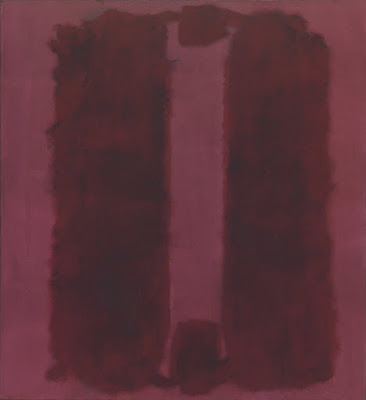I was recently asked this very question and drew a "BLANK"! No one name instantly came to mind. A flood of names did but it was more about paintings they did than the artists. I have some favorite art works but no absolute work outside our personal collection. In other words, nothing had a lasting impact which seems odd even to me. Someone who devoured library books on anything related to Architecture, design and art as a teen and still do should. Words were less important than the pictures....otherwise visual arts would not have captured my interest. Perhaps why I can't recall past artist names easily. So, I decided to spend Thanksgiving day ferreting out what influenced me the most and could it be narrowed down.
After a full day of research, dinner and a nap and one more day - to my absolute surprise I nailed it down! Rembrandt, Monet and Rothko!
After a full day of research, dinner and a nap and one more day - to my absolute surprise I nailed it down! Rembrandt, Monet and Rothko!
WHERE IT STARTED
Rembrandt, because told he was the master oil painter. The only artist I really copied any of his paintings...other than a Titian self portrait as a teen. I perfected studying a painting more. Living artist David Leffel spent a lifetime romancing Rembrandt and it shows in his work. I never wanted to emulate another artist to spend a lifetime doing it. Maybe why I can't answer that question "Who's your favorite Artist?" So artist David Leffel has a special place, because he helped me qualify if my self inflicted studies were valid by starting at the beginning studying best of breed masters. I watched a few of his videos and listened to what he had to say and realized we followed a similar path and thinking...... Laughing, even with regards to Monet! Which is why this Monet revelation surprised me. However Rothko did not. After watching a BBC documentary, he was a good match straight up...... a little quirky in a few areas too. I always liked his paintings but didn't know who the artist was until then. He had a signature look so it was easy to pick his work out. Simple classic design is hard to miss in a thumbnail lineup. It stands out!
Van Dyke, Veneer, Turner, Sargent, Degas, french artists Fragonard and Jean-Baptiste Greuze (laughing, a more interesting one after online search today) along with Murillo and countless others had a share in my development. But not one I related to on a broad spectrum as Rembrandt, Monet and Rothko.
And not for the reason you would expect. It's not about what they painted so much as how each thought and approached their careers.
Monet brought it home. Searching for that Turkey painting of his, I was reminded how he thought and approached his art career. He would probably never have painted it other than he needed money to support his art and family. Notice I put art first, because it was. The review of the painting is what clinched it. He was expected to paint for the best rooms and if he wanted patrons, he did as others before him and after. More importantly he believed in himself, his ability and his art, enough to self-promote it and made sure his legacy was not reduced to the local dump. In his case, not being mainstream could easily happen. He was quite clever and ahead of his time in that department. As we know today, he was an original, self-taught, rejected establishment values of the time with great armature success. I have a tendency to like his work after 1882. Today his work is immensely popular. Like great painters Rembrandt and Caravaggio, he was a direct painter, in his case acquired through plein air painting which made him fast and intuitive. A painting technique requiring little to no drawing except paint marks representing light. He also developed a clear understanding of what he was painting, partially deploying series painting at its best. I believe the first to do it quite that way. An organized, self-taught, problem solving artist who understood his lot and planned the final outcome...to a Tee! Exactly why he's my favorite of the three!
The only other I know who did something similar was Rothko's Seagram Paintings (Now at the Tate). Two extremes - painting mood on a mammoth scale.
This last photo shows spot lighting glow added to Rothko, perhaps the glow they talk about when in its presence. Rothko knew lighting was key and kept it low deliberately - today perhaps not as important as it would be to him. He's been dead for quite awhile. Only his eye would know.....unless he set it in the first place.....perhaps at the chapel collection is or was. The Tate feels right to the BBC Power of Art series where they show him working on these canvases......rather dark. Looking at many online images - his work is much richer and brighter than expected.
Artists Rothko and Monet seem to bring it all together near the end. I'm not sure Rembrandt was as lucky because he destroyed the one work that perhaps could be called the beginning of great conclusion to ones career. The Conspiracy of Claudius Civilis seems to be the one, a rejected commission (below) lost. Rembrandt himself, desperate for money cut it up to make it easier to sell. Interesting story too. Regardless, he produced a stunning body of work.... life often gets in the way but history gets the final word on legacy.
A CONCEPT
REDUCED TO MEDIOCRITY
click image to story
Fun research project....well worth not painting as planned. Now I can answer the question without hesitation! Also laughing, I found more than I bargained for. Another post:=)



























No comments:
Post a Comment